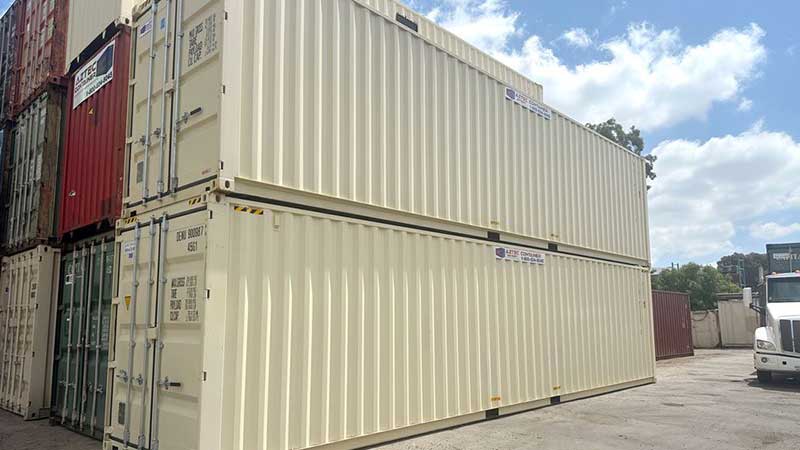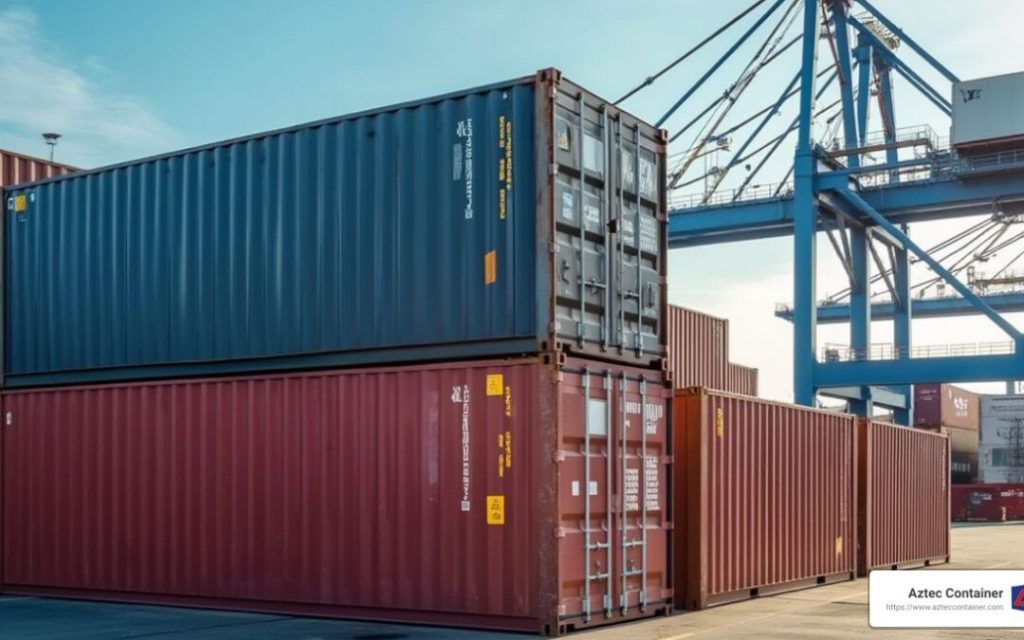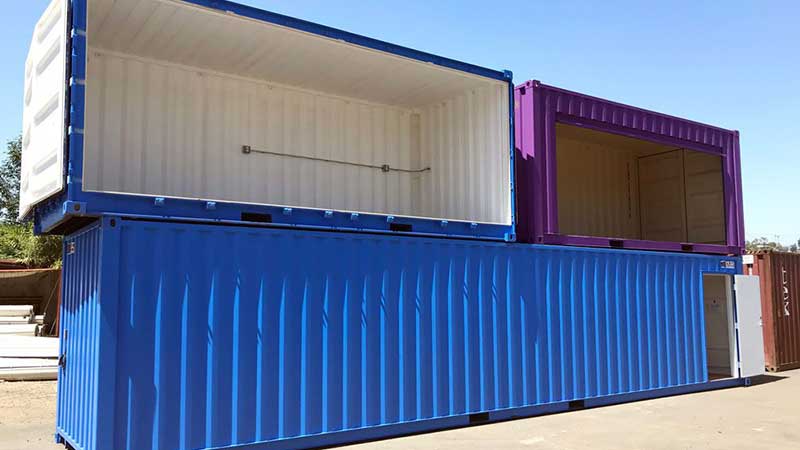Table of Contents
Introduction
Shipping containers have become an essential part of global trade, storage solutions, and even construction projects. When it comes to choosing the right container, size matters. The three most common container sizes—10ft, 20ft, and 40ft—offer different storage capacities, uses, and prices. Whether you’re looking for a 20ft shipping container for sale, or considering a 40ft container for storage or shipment, it’s important to know which option fits your needs best. In this article, we’ll explore the differences between these container sizes, their capacity in CBM (cubic meters), and how to choose the right one for you.
Understanding the Sizes and Capacities of Shipping Containers

Shipping containers come in standard lengths of 10ft, 20ft, and 40ft, but how much can each size actually hold? This is where understanding their CBM (cubic meter) capacity comes into play.
10ft Shipping Container: A 10ft shipping container typically has a capacity of about 15 CBM. This size is great for smaller storage needs or shipping smaller volumes of goods. The 10ft shipping container for sale is often sought after by people who need space for a few items or who have limited space on their property.
20ft Shipping Container: The 20ft shipping container is one of the most popular sizes, with a capacity of 33-36 CBM, depending on the model. A 20 ft container is ideal for those who need a mid-sized storage option. If you’re wondering, “How many CBM in a 20ft container?” the answer typically ranges between 33 to 36 CBM, making it perfect for small businesses, personal storage, or even residential relocations.
40ft Shipping Container: The 40ft shipping container offers significantly more space, with a capacity of around 67-76 CBM. This container is the largest of the standard sizes and is often used for large-scale shipping, commercial storage, or even conversion into a home or office. A 40 ft container for sale is commonly used by businesses or individuals with more substantial storage needs.
Key Differences Between 10ft, 20ft, and 40ft Shipping Containers

While the size and capacity differences are clear, there are also several other factors to consider when choosing between a 10ft shipping container, a 20ft container, or a 40ft container.
Price and Affordability: Generally, the cost of shipping containers increases with size. A 20 ft container for sale will typically be more affordable than a 40 ft container. A 20ft container is a good choice for those who want a balance between capacity and cost. Meanwhile, the 40ft container is better suited for large projects or businesses that require maximum storage. For smaller personal projects or tighter budgets, the 10ft shipping containers are the most economical choice, but you might be sacrificing space.
Portability and Space Considerations: If you have limited space for storing or shipping containers, a 10ft shipping container is more portable. 20ft containers are still manageable in size, but a 40ft container might be too large for some areas, especially if you’re working with residential or urban properties. For example, a conex storage container (a common type of conex container) can be more versatile than the larger 40 feet container.
Versatility and Use Cases: The versatility of shipping containers extends beyond their use for transporting goods. Many people repurpose these containers for various uses, including pop-up shops, workshops, homes, or offices. While all sizes can be used for conversions, the 20ft shipping container is the most commonly converted into a mobile office or a tiny home. For larger projects, such as commercial storage or a large office, a 40ft container for sale is ideal.
How to Choose the Right Shipping Container Size for Your Needs
When deciding between 10ft, 20ft, and 40ft containers, it’s important to consider your specific needs and usage.
For Small Projects or Personal Use: If you’re looking for a 10ft shipping container for sale, you’re likely focused on small-scale storage or moving. These containers are compact and easy to handle, making them a good fit for individuals or small businesses that don’t need vast amounts of space. They can be used for tools, small furniture, or personal items.
For Mid-Sized Storage or Shipping: A 20ft shipping container is perfect for those needing moderate space. Whether it’s for personal storage during a move or for small business storage, this size offers a good balance between cost, capacity, and space. 20ft shipping containers are also a great choice for international shipping because of their availability and standardization. Consider the 20 ft container CBM when planning how much you can store or ship.
For Large Scale Storage or Shipment: If you need large-scale storage or are shipping large quantities of goods, the 40ft container is the way to go. It’s also ideal if you plan on storing bulky items that take up more space, such as construction materials or commercial inventory. With a 40 ft shipping container, you’ll have ample room for larger operations.
Conclusion
Choosing between a 10ft, 20ft, or 40ft shipping container depends largely on your needs, available space, and budget. If you’re considering the 20ft shipping container, keep in mind it offers a great balance between price, space, and functionality. Meanwhile, the 40ft container is perfect for those with large-scale storage or shipping requirements. If you’re looking for an economical solution for small storage or personal use, a 10ft shipping container may be your best bet.
Remember that you can also purchase used shipping containers for sale to save on costs, or explore custom shipping containers for unique needs. If you’re unsure about which size is right for you, reach out to a shipping container provider to discuss your specific requirements. Ultimately, whether you’re looking for a 20ft shipping container for sale or a 40ft shipping container for sale, there’s a container size out there that perfectly matches your needs.

